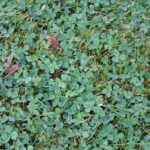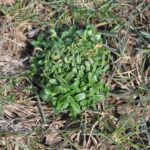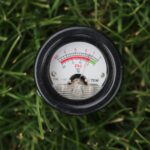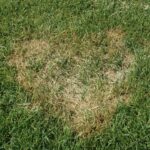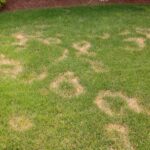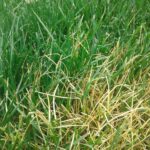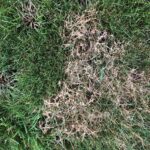Table of Contents
ToggleLast Updated on May 2, 2025
Millions of homeowners dream of having the perfect lawn and becoming the envy of their entire neighborhood. After a few years of lawn maintenance consisting of regular mowing, some people make the decision to invest a bit more and sign up with a reputable lawn care treatment company.
The sales associate explains the benefits of a regular maintenance program, the homeowner signs up for service and can hardly wait to have the lush, weed-free sea of deep green they’ve always dreamed about. Like every other thing in life however, it’s just not quite as simple as all of that. This blog will help homeowners anticipate some of the differences in managing a treated lawn, so that this largely beneficial choice isn’t overshadowed by a few surprises.
Start your Engines
The homeowner often underestimates the accelerated growth of the turf following lawn fertilization. Typically for a lawn that has not been fertilized, the homeowner can have it mowed every 7-10 days, sometimes closer to 14 days with little consequence. Once the lawn starts receiving regular fertilization, mowing must occur once each week through spring and early fall in some cases closer to every 5 days to keep it at a reasonable 3” height.
The extra cutting means added wear on the mower, which leads to the need for regular mower servicing. We recommend sharpening the mower blades 2-4 times per season and servicing the motor to insure it continues running properly. If there is a regular landscape service responsible for mowing, they will need to schedule cutting more often than before. Consult with your landscaper as there may be an additional cost associated with more frequent visits to the property.
Not all that is Green is Grass
One of the biggest misconceptions amongst homeowners is that all weeds are like dandelions; large, broadleaf, and have a huge flower. Once all the weeds are gone, the lawn is certainly going to look a whole lot nicer; however, there are plenty of weeds on the lawn that are low-lying, green and may develop a flower for just a short time. Broadleaf weeds such as ground ivy, clover, and wild violet that are eventually controlled by herbicides, may have actually contributed to the green ground cover observed from afar as part of the lawn prior to service.
As much of a difference as broadleaf weed control makes, the absence of crabgrass in the summer is probably the biggest difference homeowners aren’t prepared for. Without crabgrass prevention done each spring, a large percentage of any residential lawn becomes overrun with this weed by July each summer. Crabgrass is a low-lying, grass-like summer annual which means it actively grows in the heat. Without treatment, lawns that consist of a large amount of crabgrass are very low maintenance. They stay green with very little water and can be mowed down to 2” or less without consequence.
Once your lawn care provider preventatively controls for crabgrass, all that remains on the lawn in summer is the desirable grasses, which do not tolerate the heat nearly as well, and will not stay green unless they are properly watered. Does this mean the lawn will have to be irrigated through the summer each year? No. It’s just that the expectation is the lawn will look better with treatment, that might not be the case in the summer unless the homeowner is able to properly irrigate. It is better for the overall health of the turf to keep the crabgrass out, it just may be frustrating for the homeowner to see surrounding lawns of crabgrass (that will appear as nice, green lawns from afar) not requiring any water to maintain color.
Once crabgrass and weeds are controlled, the lawn may eventually start to appear thinner. This is because the amount of desirable grass present at the start of treatment may not have been significant enough to provide dense ground cover in the first place. Once this happens, the lawn technician servicing the property may recommend over seeding to improve the density of the lawn.
Again, this is contrary to what most homeowners expect. After all, they already purchased an annual treatment package to make the lawn look nice, shouldn’t the fertilizer be enough to make the lawn thicker? Fertilizer will make the grass already present on the lawn look thicker and greener, but it will not cause new grass to spring up out of the bare areas previously occupied by weeds. Once the weeds are controlled, homeowners shouldn’t be surprised to hear that seeding may be necessary to establish a thicker, higher quality lawn.
What is Core Aeration?
A lawn mostly comprised of grass needs more maintenance than a lawn filled with weeds. Desirable grass species considered desirable prefer well-drained, oxygenated soil. This means addressing the soil compaction regularly and controlling the thatch layer. The thatch is a layer of living grass stems and decomposing organic matter that accumulates at the base of the plants just above the soil surface. The growth of these stems is stimulated by fertilization, so the thatch layer will accumulate much faster with treatment. Overly thick thatch will block oxygen and moisture from reaching the soil, as well as provide a favorable environment for harmful insects and disease.
Additionally, central New Jersey has soil with high clay content that compacts easily. Compaction happens even more quickly as the mowing frequency increases due to fertilization.
To prevent excessive thatch accumulation and address the soil compaction, the lawn technician will start recommending core aeration. Core aeration is the process by which soil and grass plugs are mechanically brought to the surface of the turf and then allowed to resettle into the lawn. This will need to be done at least every other fall as a maintenance practice to counter the thatch growth and soil compaction. Lawns that have severely compacted soil or that are made up of certain turf species that inherently produce excessive thatch, may require annual core aeration.
Soil pH
Most fertilizers applied to residential lawns are broken down by soil microbes in order to release the nutrients to the plants. This process occurs very efficiently within the soil provided that the pH remains within a range of 6.0-7.0, depending on the grass variety. In order to get the most from fertilization, lawn care companies test the pH regularly as part of regular maintenance. When the soil becomes more acidic the technician will recommend that lime be applied to help bring it back up into the optimum range.
It Never had Disease Before
Almost everyone knows that mushrooms are fungi, and most everyone has observed mushrooms growing in the grass or near trees in beds at one time or another. However, it is not common knowledge that there are also millions of microscopic fungi living in the soil that can attack grass plants causing what we refer to commonly as turf diseases. These pathogenic fungi do not significantly impact broadleaf weeds or crabgrass, so prior to the lawn becoming a grass exclusive property through treatment, disease is of no concern.
Like diseases that affect humans, lawn diseases can range in severity from relatively harmless to damaging. All lawn diseases though have some sort of negative impact on the look of the turf. Lawn technicians will diagnose disease issues and make recommendations for treatment. Control recommendations are usually adjustments to water or mowing but can also include the use of fungicides. Fungicides, like medicine, are additional treatments done to chemically control disease symptoms. The cost of fungicide is not something typically built into any normal maintenance program, so they can present an additional cost which can be a shock to the homeowner receiving treatments for the first time.
Don’t Be Too Concerned
At the end of the day, the lawn will look far better with treatment than it did without. Also, not all the circumstances outlined in this blog are going to present themselves all at once, but each one will likely be something referenced by your lawn specialist at some point. The difference now is that you have been equipped with the knowledge of what to expect, so it should come as no surprise.


